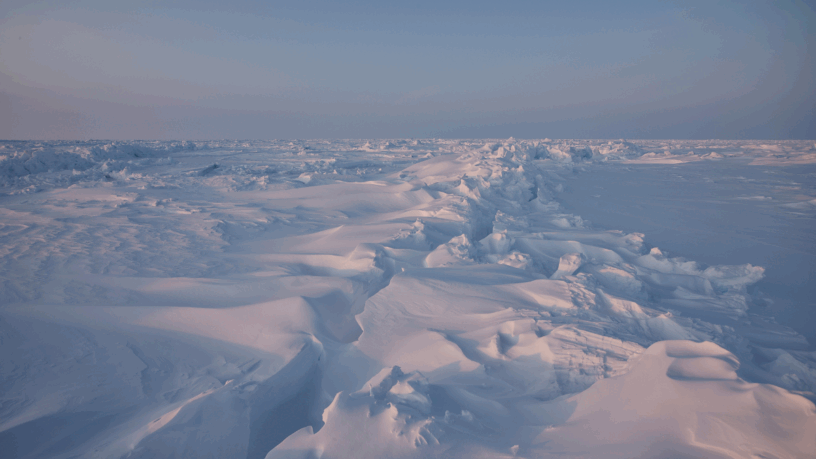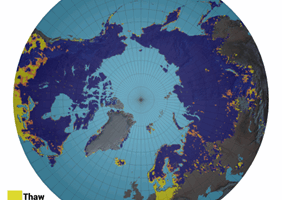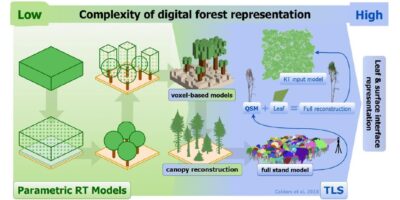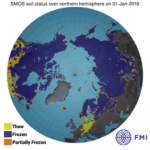This uneven snow distribution affects how sea ice grows and how its thickness is measured by satellites. The new findings help improve climate models and satellite-based monitoring of the Arctic, both of which are crucial for understanding climate change.
In a study published in the Journal of Glaciology, a team of researchers led by the Finnish Meteorological Institute found that nearly half of the snow that falls on flat, level Arctic sea ice doesn’t stay there. Instead, about 40 percent of snow can be swept away by wind.
“Snow doesn’t stay put. It gets blown away by the wind and accumulates around ridges and uneven ice areas, leaving flat areas with much less snow”, explains Ioanna Merkouriadi, senior scientist at the Finnish Meteorological Institute and the lead author of the study.
This natural relocation of snow is called snow redistribution. It has a major effect on how sea ice grows and how thick it becomes over the winter. Snow insulates the ice beneath it, slowing down its growth.
“To calculate ice thickness from satellites, we need to know how much snow is sitting on top. If snow redistribution is not accounted for, it is easy to miscalculate how thick—or thin—the sea ice really is”, says Arttu Jutila, researcher at the Finnish Meteorological Institute and a co-author of the study.
If models assume there’s too much snow on flat ice, the ice thickness will be incorrectly estimated as too thin. The study shows that correcting for this snow loss is important, especially for current satellite missions like CryoSat-2 and ICESat-2 that estimate the thickness of snow-covered sea ice.
A new way to simulate snow and ice together
To study snow redistribution, the research team combined a snow model and an ice model in a new way that allowed snow and ice to interact more realistically. They tested their results using over a decade of airborne snow and ice measurements from survey flights in the western Arctic. The improved model could reproduce the observed snow and ice conditions much more accurately when it accounted for the missing snow on flat ice.
The team of researchers also found that the amount of snow remaining on flat ice is directly tied to how much the ice is deformed. This new understanding helps predict snow distribution using just ice deformation data, which is a valuable shortcut for researchers.
The results help scientists better understand how snow and sea ice behave in a warming Arctic. This in turn improves the tools used to track changes in the polar regions and predict their future.
“Snow redistribution is a hidden but important part of the Arctic system. This study gives us a clearer picture of how snow and sea ice interact—and why it matters for our understanding of the changing Arctic,” says Ioanna Merkouriadi.
The study was part of Academy fellowship project of senior scientist Ioanna Merkouriadi, funded by the Research Council of Finland.
More information
Senior Scientist, Researcher Ioanna Merkouriadi, Finnish Meteorological Institute, tel. +358 40 867 4802, ioanna.merkouriadi@fmi.fi
Scientist, Researcher Arttu Jutila, Finnish Meteorological Institute, tel. +358 50 460 5587, arttu.jutila@fmi.fi
The scientific article was published on 14 May 2025, and it is freely available in Journal of Glaciology.
Reference: Merkouriadi I, Jutila A, Liston GE, Preußer A, Webster MA (2025) Investigating snow sinks on level sea ice: A case study in the western Arctic. Journal of Glaciology 71, e66, 1–13. https://doi.org/10.1017/jog.2025.34








Leave a Reply
You must be logged in to post a comment.